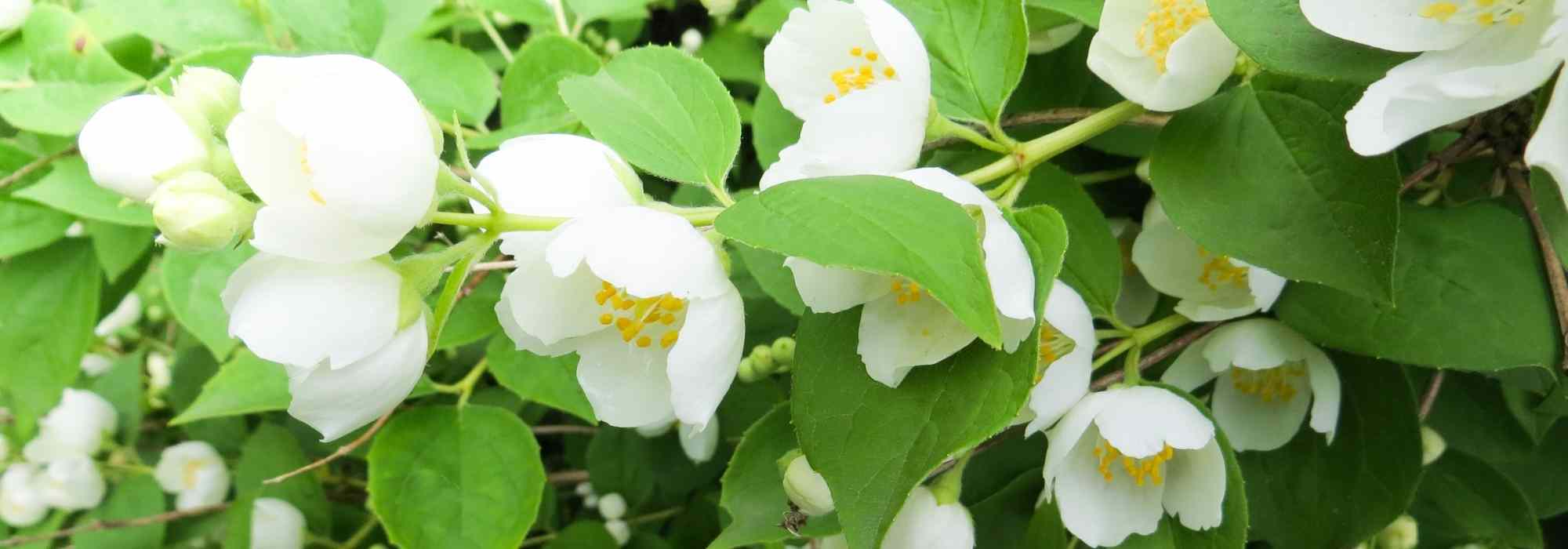
How to choose the ideal Philadelphus or Mock Orange ?
Buying advice to help you choose the mock orange best suited to your preferences and garden.
Contents
The mock-orange (Philadelphus), also known as poet’s jasmine, is a bush highly prized for its incredible fruity fragrance and beautiful white flowering in late spring.
Easy to grow, it thrives in most soils, even poor ones, is not prone to disease and displays great hardiness, making it a must-have bush in the garden.
Genus Philadelphus comprises around 40 species. While it is mainly the shape of the flowers (single, double, solitary, in clusters…) and their fragrance that influence choice of a mock-orange, foliage appearance, pruning requirements and growing constraints are further criteria to consider. Discover our guide to find the perfect mock-orange variety.
→ Learn more with our complete factsheet on Philadelphus
Most fragrant mock orange varieties
While rare inodorous mock orange varieties exist, such as Philadelphus inodorus, most of these bushes give off a rich, gourmand fragrance, especially noticeable after a warm sunny day.
Scents evoke, depending on the variety, orange blossom, wild strawberry, rose or neroli.
Single-flowering varieties may seem less showy, but are the most fragrant mock oranges. Conversely, double-flowered varieties, whose spectacular flowering has greatest ornamental interest, are less scented.
Among the most fragrant mock oranges are :
- Philadelphus coronarius, an old variety long cultivated for its intense, even heady, orange blossom fragrance
- the species Lemoinei, ancestor of numerous varieties and the most fragrant hybrid mock orange
- its cultivars ‘Avalanche’, ‘Gerbe de Neige’ or ‘Manteau d’Hermine’ with captivating fragrances
- the variety ‘Innocence’, considered one of the most fragrant mock orange varieties, whose scent is close to neroli
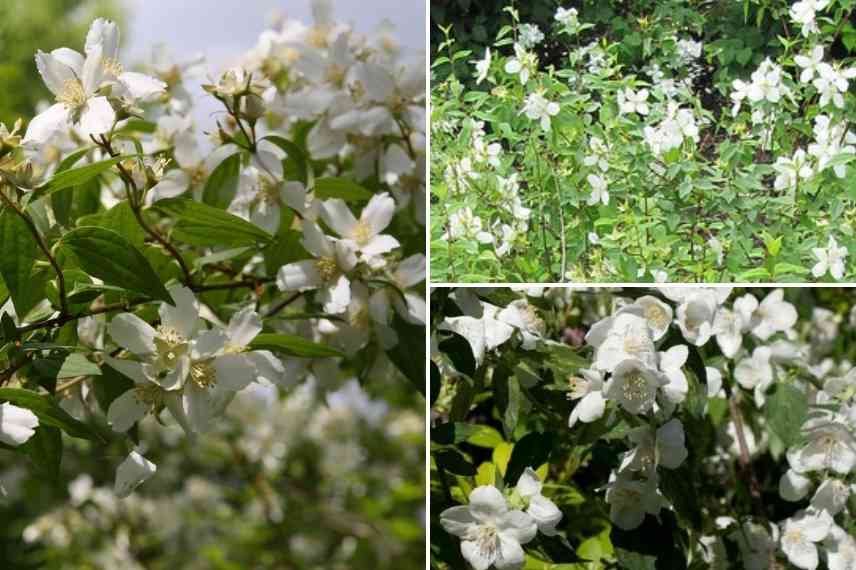
Philadelphus coronarius, ‘Lemoinei Avalanche’ (photo: L. Enking), and ‘Innocence’
Based on its flowers
Mock orange bears solitary, cup-shaped flowers 1–7 cm across. Rounded petals, pure white or cream, surround a heart of stamens sometimes lightly tinged with yellow, pink or purple tones.
But some varieties offer even more remarkable flowering: large flowers, flowers grouped in clusters, small bouquets or double flowers.
Mock orange with single flowers
Older varieties generally produce single, four-petalled flowers, which nonetheless make charming flowering bushes. This is the case, for example, of mock orange ‘Innocence’.
Philadelphus ‘Belle Étoile’ also produces single flowers whose yellow stamens reveal a very pretty contrasting purple heart, giving a truly romantic touch to garden.
Lemoine mock orange Philadelphus Lemoinei is adorned with a profusion of white flowers arranged in single corymbs: its flowers are grouped somewhat like an umbel, creating a lovely massed effect.
Double and semi-double mock oranges
For spectacular double flowering, choose Philadelphus ‘Virginal’ with white flowers and yellow stamens, or ‘Minnesota Snowflake’ for its double flowers reminiscent of petticoats, gathered in clusters.
Double mock orange Philadelphus ‘Manteau d’Hermine’ displays pretty cream-white flowers, while hybrid ‘Frosty Morn’ bears lovely double flowers gathered in bouquets.
Dwarf variety Philadelphus ‘Little White Love’ also impresses, with very double, pure white flowering.
Philadelphus ‘Natchez’ is a variety offering large single to semi-double, star-shaped flowers with a charming crinkled appearance.
Finally, Philadelphus ‘Dame Blanche’ has the particularity of producing on the same bush either single or double flowers grouped in bouquets — ideal variety for indecisive gardeners.
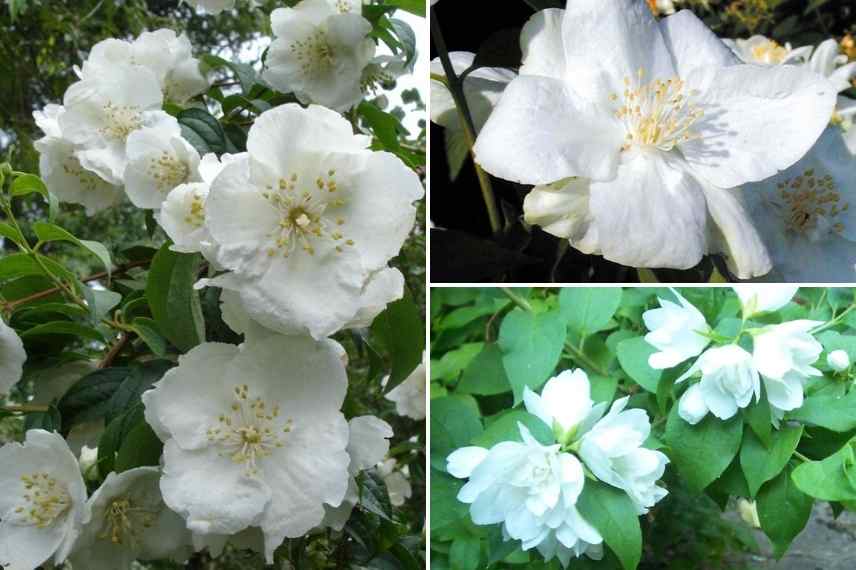
Philadelphus ‘Virginal’, ‘Natchez’, and ‘Manteau d’Hermine’
Mock oranges with larger flowers
Variety ‘Belle Étoile’ and garden mock orange Philadelphus Starbright bear large 5 cm flowers.
Philadelphus ‘White Rock’ (Pekphil) offers a cascade of white flowers in corymbs, single or double, measuring 6.5 cm.
Finally, white mock orange ‘Natchez’ bears tight clusters of large white flowers reaching 7 cm, carried by lush foliage. A true spectacle in the garden!
Discover other Philadelphus - Mock Orange
View all →Available in 2 sizes
Available in 1 sizes
Available in 3 sizes
Available in 2 sizes
Available in 2 sizes
Available in 1 sizes
Available in 4 sizes
Available in 2 sizes
Available in 1 sizes
Available in 1 sizes
Depending on the flowering period
Mock orange flowering generally occurs in late spring, but can start as late as July for the latest varieties.
Early-flowering mock oranges
Garden mock orange Philadelphus coronarius and its cultivar ‘Aureus’, as well as the ‘Starbright’ and ‘Innocence’ varieties, are the earliest flowering varieties, from May or June.
This also applies to Philadelphus ‘Manteau d’Hermine’, an award-winning variety in England, and dwarf mock orange ‘Little White Love’.
Later-flowering mock oranges
For late flowering in mid‑summer, around July, opt for ‘Dame Blanche’, ‘Frosty Morn’, ‘Albâtre’, ‘Natchez’, garden mock orange ‘Belle Etoile’, white mock orange Philadelphus virginal or Lemoine’s mock orange Philadelphus lemoinei.
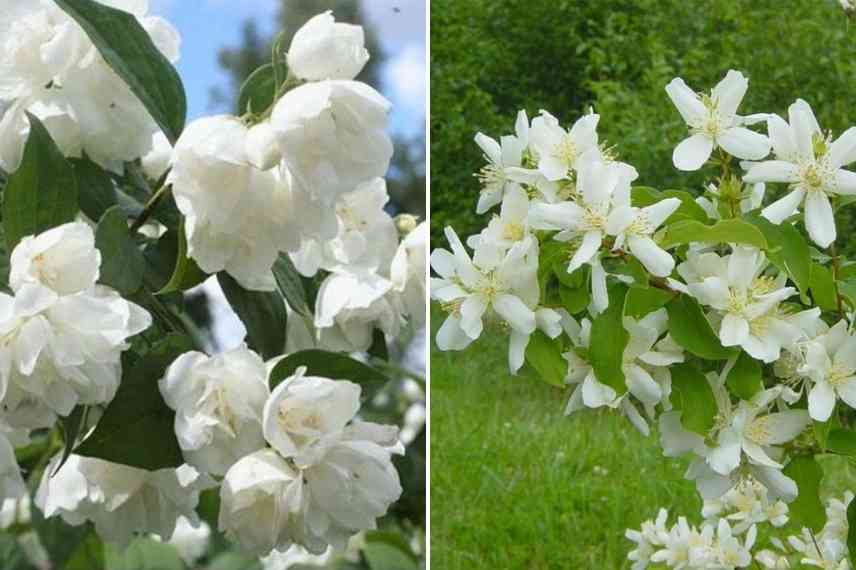
Philadelphus ‘Albatre’ and ‘Lemoinei’
Read also
How to propagate mock orange?Depending on the shape and colour of its foliage
Mock-oranges with decorative leaves
Mock-oranges generally have bright green or dark green leaves, but some display beautiful variegated or golden leaves.
Cultivars of Philadelphus coronarius offer strikingly contrasting leaves, such as ‘Aureus’ with its luminous golden leaves or ‘Variegatus’ with its magnificent light green leaves edged in cream.
‘Innocence’, meanwhile, bears leaves spotted with warm golden-yellow or cream tones.
The mock-orange ‘Starbright’ shows bronze and purple tones, from its young shoots to the base of its flowers. These unusual colours make it a highly prized, elegant variety.
Finally, it is not the leaves but the bark that distinguishes these two mock-oranges: Philadelphus ‘Dame blanche’ retains a decorative aspect even after leaf drop thanks to brown bark that peels with time; likewise, ‘Innocence’ has reddish-brown or brown‑orange bark that flakes as it ages, creating a very attractive effect.
Mock-oranges with trailing or weeping habit
Habit of mock-oranges is generally irregular and bushy, but can be more or less spreading, even trailing.
‘Belle Etoile’ has a rounded, almost weeping habit, as does Lemoine mock-orange ‘Manteau d’Hermine’, whose spreading habit and nicely arched shoots recall shape of a parasol.
Philadelphus ‘White Rock’ (Pekphil) offers a compact habit, with trailing shoots forming true cascades of white flowers that flood the garden.
White mock-orange Philadelphus ‘Natchez’ also displays a fountain habit, with splendid tight clusters of large white flowers.
Depending on its pruning
Mock oranges have sizes that are rather variable. Some varieties do not exceed 1 m at ripeness and are perfect for pots or small gardens.
Conversely, others can reach more than 3 m in height and spread. They will therefore require a larger amount of space.
Small varieties ideal for confined spaces and pot culture
Dwarf species that are compact and space-saving adapt perfectly to pot or container culture. They find their place on terraces, balconies or in urban gardens:
- Philadelphus microphyllus, the smallest of mock oranges, barely exceeds 1 m
- ‘Little White Love’, whose spread at ripeness reaches 1 m, is also known for its natural resistance to pollution
This small size does not prevent them from being very floriferous and fragrant.
The American variety ‘Frosty Morn’ (1.25 m), varieties ‘Dame Blanche’ (1.30 m), ‘White Rock’ (1.50 m), ‘Manteau d’Hermine’ (1 m height for 1.50 m spread), ‘Natchez’ (1.60 m), and Philadelphus Lemoinei (1.50 m) are also well suited to pot culture and small spaces.
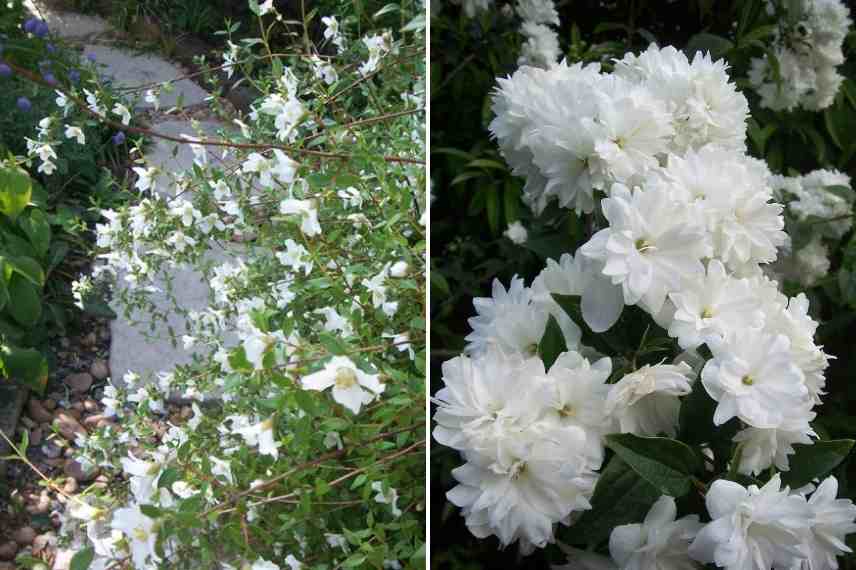
Philadelphus microphyllus on left (Photo: L. Enking), and ‘Frosty Morn’ on right
Larger varieties
Mock orange ‘Albâtre’, garden mock orange ‘Belle Etoile’ or ‘Starbright’ can reach 2 m in height.
‘Innocence’ has a size and spread at ripeness of nearly 2.50 m, but the largest varieties can reach greater heights. This is the case of Philadelphus coronarius, which can itself reach ripeness at a height and spread approaching 4 m. Its base widens with growth, allowing it ultimately to be as tall as it is wide.
Suited to your growing conditions
Mock orange bushes are undemanding and very robust, making them easy to grow bushes, even for novice gardeners.
They tolerate heavy (clayey), alkaline (calcareous) or light (silty) soils, and will thrive in cool soil kept moist in summer or in drier soil, such as Philadelphus coronarius known for its drought resistance.
Hardiest mock orange bushes
Mock orange bushes are fairly hardy: they generally tolerate cold down to -20°C, although they can dislike waterlogged soil in winter.
For varieties that tolerate even lower temperatures, opt for varieties such as ‘Innocence’, ‘Manteau d’Hermine’, ‘Albâtre’ or ‘Natchez’.
In areas with cold, severe winters, conversely avoid less hardy varieties, such as small Philadelphus microphyllus, which generally does not tolerate temperatures below -15°C.
Mock oranges for shady positions
Mock orange bushes prefer full sun or partial shade, but some, such as Philadelphus ‘Natchez’, are particularly tolerant and will even withstand shaded positions.
Similarly, the attractive decorative foliage of Philadelphus ‘Innocence’ is intolerant of strong sunlight, so will prefer shaded or semi-shaded areas of garden.
- Subscribe!
- Contents
































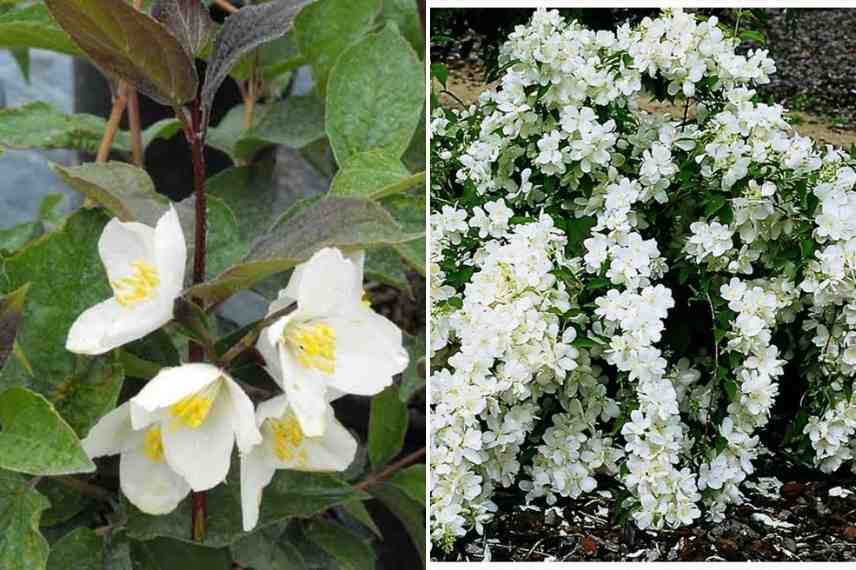
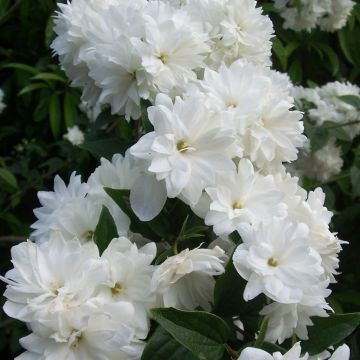
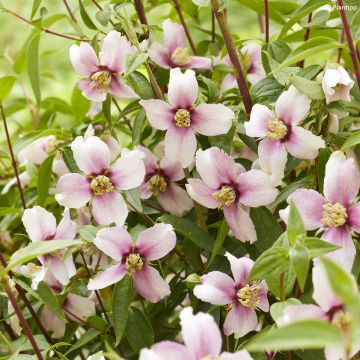
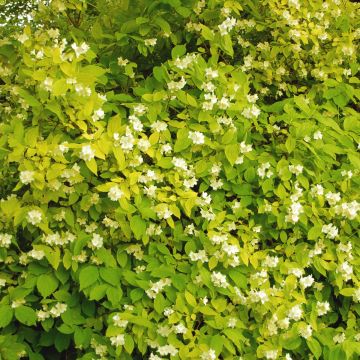
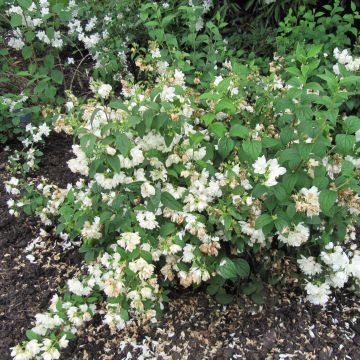
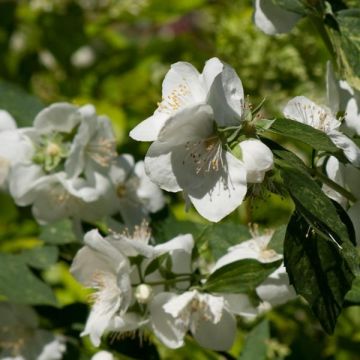
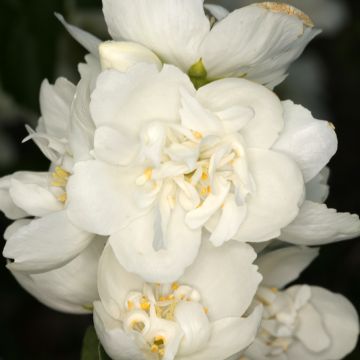
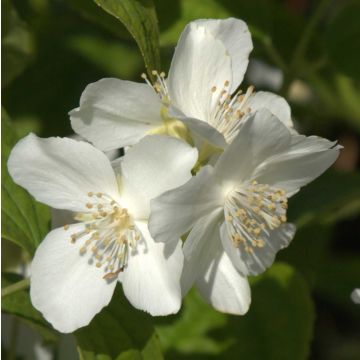
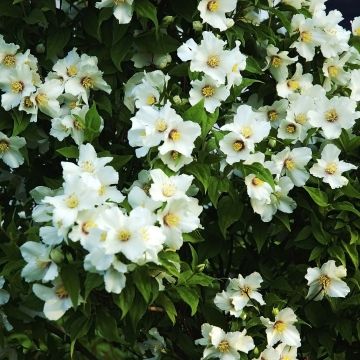
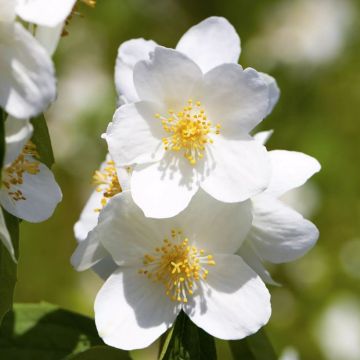
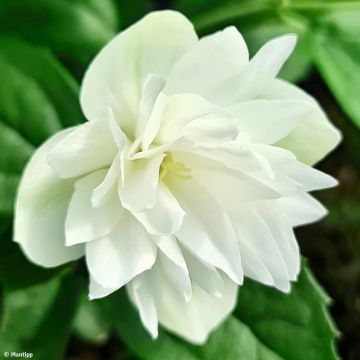
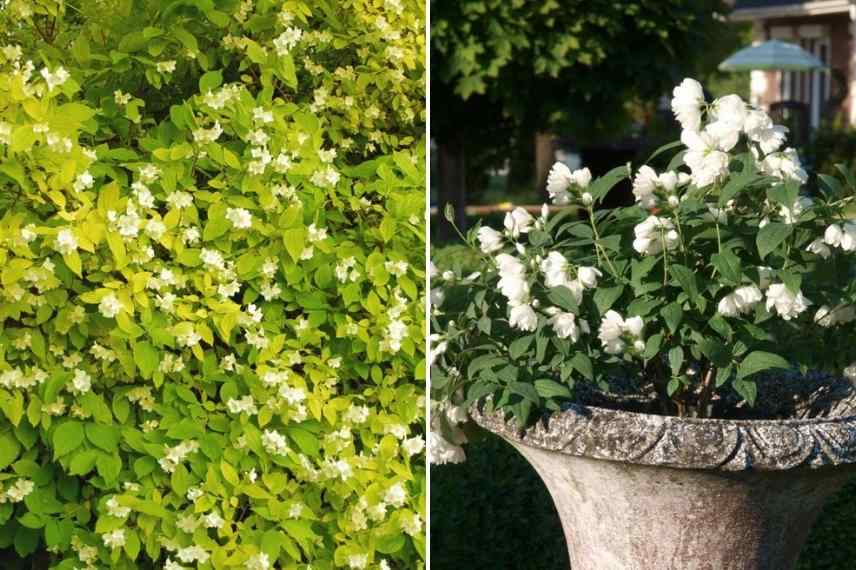
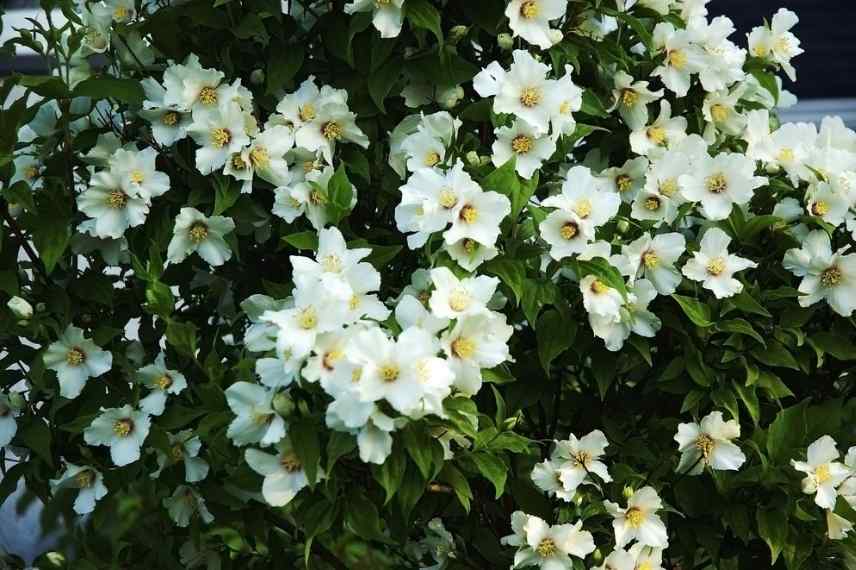
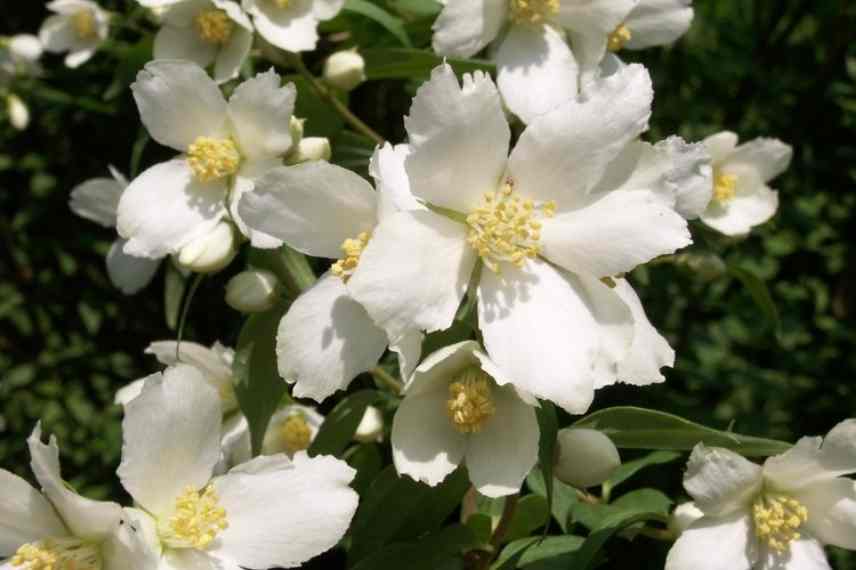
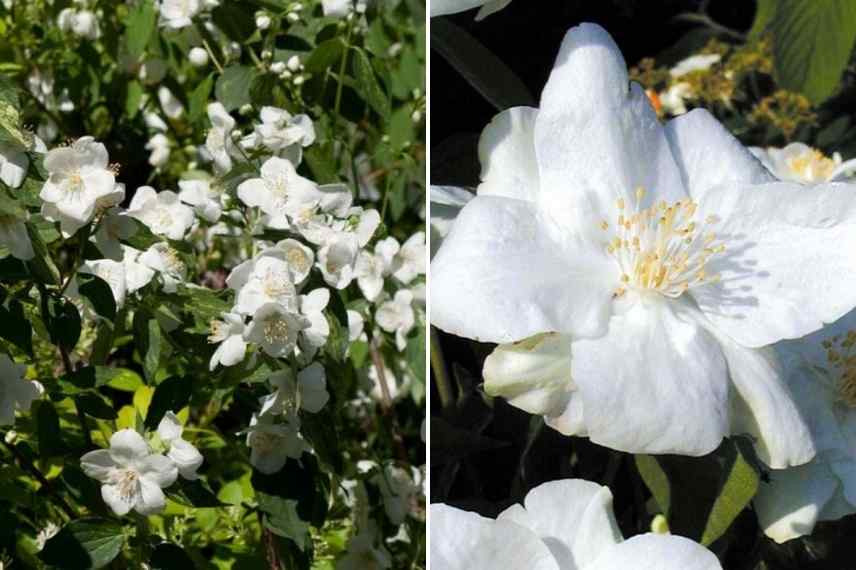
Comments